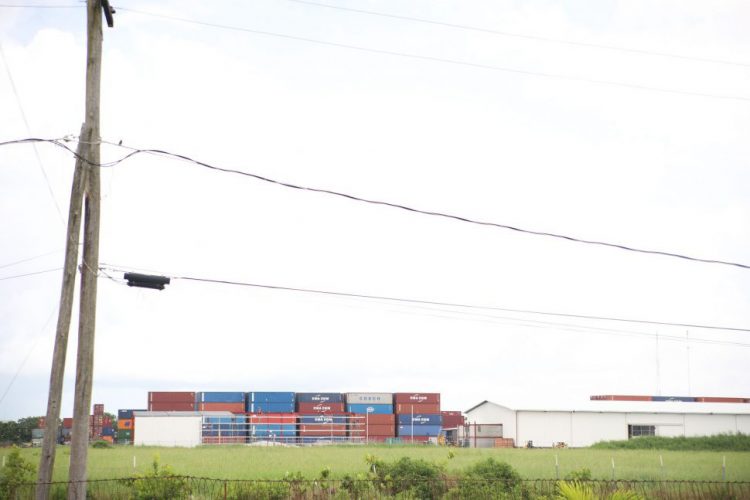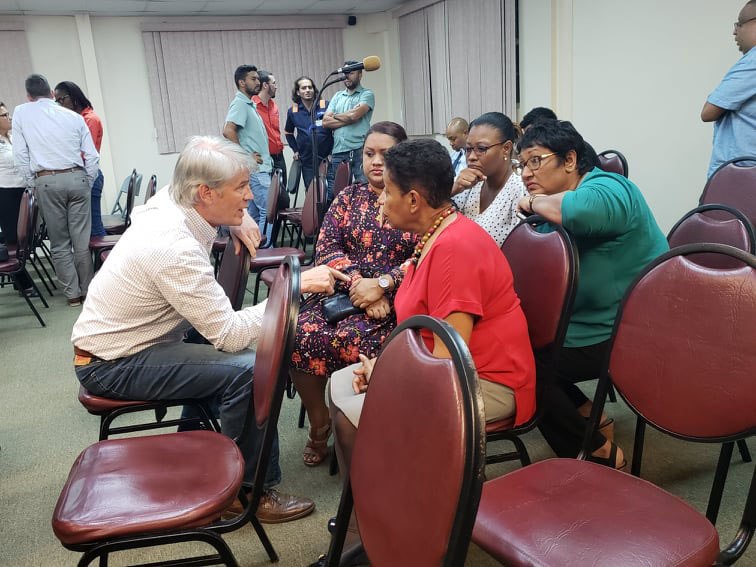Oil services company Nalco Champion will not be storing chemicals at the John Fernandes Ltd (JFL) Inland Terminal at Industrial Site, Ruimveldt as its client ExxonMobil has moved to access those services overseas.
The Environmental Protection Agency (EPA) had granted interim permission for one year for the company’s operations at the location pending the meeting of certain requirements but Nalco on Friday officially informed the EPA that it would no longer be needing the permit.
“We did receive a letter from them on Friday and the letter basically states that conditions outlined in the letter [EPA’s 12 months permission] will not facilitate execution for their client,” EPA chief Vincent Adams told Stabroek News when contacted yesterday.
A Nalco representative, when reached, told Stabroek News that he will not be answering questions via phone and asked that questions be sent via WhatsApp. Those questions were sent but up to press time, no response had been received.
Nalco’s plans for the storage of chemicals at the Industrial Site location for eventual transfer to ExxonMobil’s offshore Floating Production Storage and Offloading (FPSO) oil platform had triggered protests from residents amidst concerns about possible dangers to nearby communities.

ExxonMobil’s decision now would mean lost revenue for Guyana but Houston resident, engineer Charles Ceres, said that the loss should not be put over human health and life. He indicated that he is pleased with the decision made.
“I don’t have any time with anyone and lost revenue. I have time with my quality of life. If anyone wants to talk about lost revenue they must talk about the US$18 million given by ExxonMobil when we should have gotten at least US$2 billion. That is lost revenue,” Ceres said.
Representatives of residents from Houston Gardens, Roxanne Burnham Gardens, Shirley Field Ridley Square, Rasville and D’Aguiar Park had raised objections to the proposed chemical plant being constructed at the JFL Inland Terminal as they said it may affect the welfare of those communities.
According to a notice published in July by the EPA, Nalco Champion Guyana submitted an application for an Environmental Authorisation for the operation of a chemical warehousing facility at JFL’s Inland Terminal and the transportation of chemicals from the location to John Fernandes’ Water Street port for transfer to the FPSO vessels offshore Guyana.
It explained that the facility at the Inland Terminal site is to be engaged in the filtration, storage and warehousing of oilfield chemicals to supply the FPSO vessels that will be offshore Guyana. The proposed operation estimates that 1,493,000 kg of specialty and commodity chemicals will be imported and stored on-site and will occupy 5,000 square metres, with the intention of extending to 20,000 square metres as oil production increases. The notice added that the proposed development of the operation will also involve the construction of office spaces, installation of a laboratory, storage of mechanical equipment and parts and transportation of chemicals, among other activities.
Subsequently, after residents protested, Nalco Champion representatives announced that they were going to halt all plans for the operations of the chemical warehouse. In July, the Georgetown city council issued a cease order to halt the construction of the chemical warehouse saying that no permission had been granted.
In a subsequent meeting with residents last month, it was related that the company had not yet determined whether it will store chemicals at the Ruimveldt location though a company representative said that it remained the best site.
Adams said yesterday that following the meeting, the EPA granted a temporary permit.
“We had issued them an interim authorisation while they proceed with the required [Environmental Impact Assessment]. So they could have gone ahead. It was a 12 months approval. It is the same length of time that [the Central Housing and Planning Authority] gave them while they work through the process. I do not understand why they did not use it when they were given an interim permit. I do not understand why not,” Adams said.
The granting of the interim permit meant that the company could have commenced operations while seeking to meet regulatory requirements, Adams indicated.
“One of the conditions of that interim permit was an issuance of [a] permit from the fire service and approval from the Guyana Sea Defence Board and, of course, for conducting the EIA. The second was [for undertaking] the Environmental Impact Assessment even as they were operating at John Fernandes, and the third mitigation measure [was] to significantly reduce any adverse impact to the environment and human health. The bottom line is they were allowed to operate. We gave them authority to operate while they put these things in place. They are now saying that they are unable to meet those conditions,” he added.
Asked if any reasons were given, Adams said, “To be honest, I don’t know why.”






